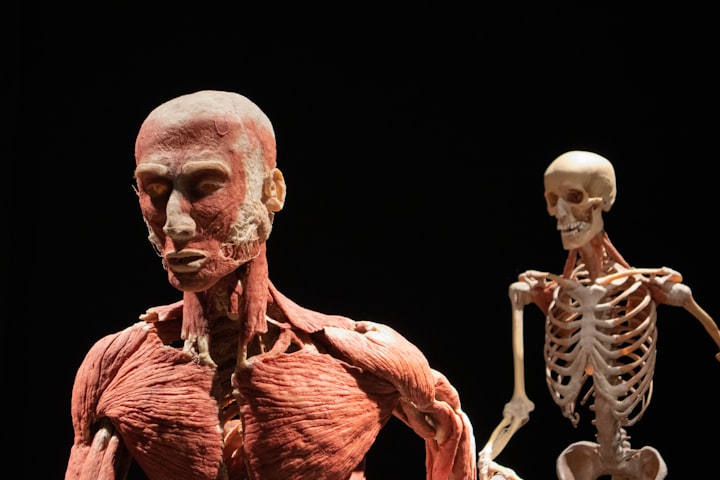Body part’s so awesome we barely even know
Our body is a like a walking history book…

Our bodies, intricate and fascinating, harbor a multitude of features that trace back to our evolutionary past. Let's embark on a journey through these vestiges of our ancestry, starting from the ground up.
Ever wondered why we have arches in our feet? These foot arches, like built-in shock absorbers, facilitate our movements, allowing us to bounce and providing essential support. The longitudinal arch, running along the length of the foot, acts as scaffolding, maintaining firmness. Meanwhile, the transverse arch, like a bridge, contributes to 40% of the foot's stiffness. Astonishingly, these arches have been integral to our anatomy for millions of years, with the transverse arch dating back 3 million years and the longitudinal arch appearing around 1.8 million years ago.
But it's not just our feet that carry evolutionary echoes; our pinky toes play a crucial role in maintaining balance. Though not essential for walking, they contribute to the intricate balance system within our feet, a legacy from our ape ancestors who needed their toes for gripping and swinging from trees.
Moving up the body, the appendix, often considered a vestigial organ, isn't as useless as one might think. During fetal development, around the 11th week, it starts producing cells that play a role in training our immune system, ensuring it becomes a formidable defender. Despite its reduced significance in our modern diet, the appendix isn't always harmless, occasionally turning into an inflamed troublemaker.
Speaking of vestigial structures, wisdom teeth take the spotlight. Nearly 95% of us have them, causing various issues due to changes in our diets and advancements in food preparation. These extra teeth, once vital for chewing tough foods, have become more of a nuisance than an asset.
As we explore further, the palmaris longus, a tendon in the wrist, becomes a focal point. About 85% of us carry this seemingly redundant structure, a reminder of our ancestral need for a strong grip and swinging abilities. Even before birth, at around 16 weeks in the womb, humans exhibit a gripping reflex, holding onto the umbilical cord. However, this reflex diminishes around 3 months after birth.
Interestingly, during fetal development, humans also sport a mini tail, a remnant that disappears as tiny vertebrae form the coccyx or tailbone. While we lose our gripping reflex and tail, some individuals retain the ability to wiggle their ears, a feature with no significant function in modern humans but possibly remnants of our ancestors' expressive abilities.
Toenails, seemingly simple yet significant, also have an evolutionary backstory. Serving as a line of defense against harmful microorganisms, they were once essential for defense, digging, and climbing. In today's world, they still play a role in protection, albeit less directly.
Our eyes, while not vestigial, have muscles that are vestigial in nature. These muscles, present in animals to aid in hearing and expression, have limited function in humans. Despite our advanced communication methods, some individuals can still wiggle their ears, showcasing the remnants of these muscles.
Transitioning to the animal kingdom, ostriches and cassowaries present a fascinating case of vestigial wings. While incapable of flight, these wings serve a purpose in maintaining balance during rapid running and elaborate courtship displays.
Delving into the realm of bioluminescence, approximately 76% of ocean animals, including jellyfish, worms, sharks, and sea stars, possess this capability. Bioluminescence serves various functions, such as stunning predators, attracting prey, or warning others of danger. Humans, too, emit light, albeit at a faint level, with our glow changing throughout the day.
In the realm of exclusive human traits, blushing takes the lead. Humans are the only animals capable of blushing, a complex response rooted in the understanding of others' perceptions. Embarrassment triggers a dilation of blood vessels, resulting in the rosy hue associated with blushing.
Lastly, we acknowledge the importance of the gut, often referred to as the "second brain." With its own nervous system and 100 million messengers, the gut ensures the seamless functioning of the digestive system, even if the gut-brain connection is severed.
Our bodies, a testament to evolution, carry within them the story of our past. From foot arches to vestigial organs, each feature narrates a tale of adaptation and survival, providing a glimpse into the incredible journey of human evolution.
About the Creator
Kester Idebaneria
All readers are leaders






Comments
There are no comments for this story
Be the first to respond and start the conversation.